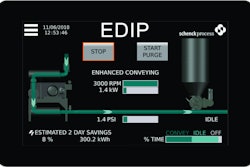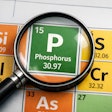Sponsored by Trouw Nutrition
Consumers are becoming increasingly interested in maintaining their pets’ well-being as much as their own. Trace minerals, such as zinc, copper, iron and manganese, are an essential part of that wellness formula. They play key roles in cell function, oxygen exchange, and numerous other bodily processes.
But trace minerals are often a source of confusion for pet food formulators, who have historically relied on mined, or inorganic minerals, to provide the nutrient levels recommended by the American Association of Feed Control Officials (AAFCO). These inorganic minerals are often poorly utilized by the animal’s body, so formulators generally add extra amounts as an insurance policy against sub-optimal nutrition. This approach does not necessarily meet the actual needs of pets, especially in challenging life stages, such as infancy, pregnancy, old age and illness.
Organic minerals offer a better way. They are minerals the way nature intended—wild animals get most of their minerals from plants and meat, not from rocks. Like the minerals in plants and meat, organic minerals are carbon-based molecules. Carbon is a key element of all life, and carbon-based compounds are more available to an animal’s body.
Tom Best, National Sales Manager for Trouw Nutrition, recently sat down with Petfood Industry to bring some much-needed light to the subject of trace minerals in our animals’ diets.
PETFOOD INDUSTRY: Why do people use organic trace minerals in pet nutrition?
TOM BEST: Pet owners want to provide the best nutrition possible for their animals. Organic trace minerals are a protected source of trace minerals that improve the probability of meeting your pets’ nutritional needs.
Trace mineral nutrition is widely misunderstood. Minerals come in many different forms. Inorganic minerals are the most common. However, they can be very inefficient. Each source has a different rate of solubility, reactivity and, ultimately, availability for the animal. These factors influence the effectiveness of each source during the digestion process at any given point in time.
Organic minerals that have high stability work best. They withstand a lot more of the antagonism in the digestive tract. As a result, the animal’s body can absorb as much as it needs.
PETFOOD INDUSTRY: How are minerals absorbed during the digestion process?
TOM BEST: Digestion is dynamic, and the chemistry of digesta is constantly changing. During digestion, reactive materials, such as free mineral ions, combine rapidly with chemical partners until most of the free ions are consumed.
Because of the nature of digesta, many of the minerals entering the digestive system get tied up. They become insoluble or unavailable and pass through the animal in the feces. Some of the ionized minerals react with digestion products that allow them to remain soluble and available during their passage through the digestive tract.
Our goal is to keep the mineral available for absorption so our pets can utilize it when needed.
PETFOOD INDUSTRY: What determines whether the nutrients are utilized?
TOM BEST: Our pets have homeostatic mechanisms that check the status of their mineral needs. When their system determines they need specific minerals, they up-regulate the absorption for those nutrients. The animal’s system has several different specific transporters in the epithelia layer of the small intestines that captures the minerals needed. When the homeostatic mechanism determines it has enough minerals, it shuts down these transporters or metabolic pathways.
Each of these minerals are essential but can be toxic if fed in excess. Metabolically, it is important that these nutrients are monitored frequently by the pet’s systems to keep levels optimal.
PETFOOD INDUSTRY: What is the difference between inorganic, complexed and chelated minerals?
TOM BEST: Inorganic minerals are usually in the form of sulfates or oxides. They are relatively soluble and when they ionize in solution, they complex quickly with other components of the digesta. Since many of these reactions render the mineral unavailable, inorganics are inefficient and must be fed at higher levels in order for enough minerals to be absorbed.
Complexed trace minerals are a form of organic trace mineral. They are preformed compounds that help keep the mineral stable, or unreactive, and available for absorption. Most of these complexes are simple complexes that only have one attachment point between the mineral and its ligand, or partner.
Chelates, on the other hand, are organic trace minerals that have at least two or more attachment points between the mineral and its ligand. These additional bonds improve stability and help keep the mineral bound to its preformed ligand longer, preserving its availability to be absorbed if needed. Chelates improve the probability that the chelated mineral will reach the small intestine in a form that can be absorbed through the gut wall, even during times of difficult digestive conditions, such as stress, antagonists in the diet, immune challenge, and normal pH conditions.
PETFOOD INDUSTRY: Why is the strength of the bond important?
TOM BEST: There are many different choices of ligands for organic trace minerals. Each ligand has a different affinity, or attraction, to the different minerals. Choosing the right ligands—ones that have the ability to chelate and have a strong affinity to the individual mineral—greatly improves the stability of the organic trace mineral. The stronger the bond strength, the greater the stability. Stable organic trace minerals resist antagonistic reactions that might make the nutrient unavailable.
PETFOOD INDUSTRY: What sets Optimin® organic trace minerals apart?
TOM BEST: You can’t fool Mother Nature, so we’re not even trying. We are not changing how nature preserves mineral availability in the animal—we are duplicating it. We put together our trace minerals the same way it happens in the animal’s digestive tract.
The result is our Optimin® chelated minerals, which have the greatest chelation stability available for feed use.
By feeding stable preformed chelates, we increase the probability that these minerals reach the site of absorption in a soluble and available form with greater efficiency of utilization. Stability, keeping the organic trace mineral intact, is the greatest determinant of the probability of nutritional success.
The pet’s homeostatic mechanisms determine whether the nutrients are up- or down-regulated. If needed, the soluble and available nutrients will be up-regulated and absorbed. If nutrients are in oversupply, down-regulation mobilizes excretion of excess nutrients. Optimin mineral’s superior chelation technology better cooperates with these homeostatic mechanisms.
For more information, contact your Trouw sales representative or visit https://www.trouwnutritionusa.com/en/products/catalog/optimin/1563863















